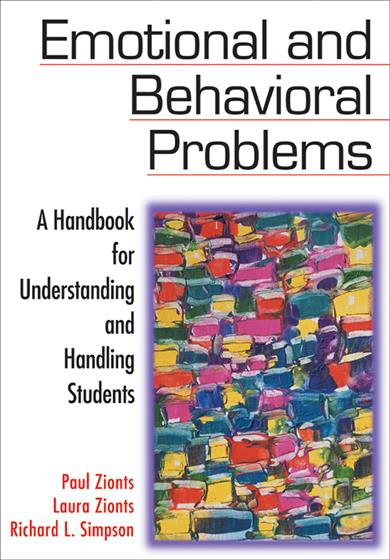
Hands-on, Practical Guidance for Educators
From math,
literacy, equity, multilingual learners, and SEL, to assessment, school counseling,
and education leadership, our books are research-based and authored by experts
on topics most relevant to what educators are facing today.
Emotional and Behavioral Problems
A Handbook for Understanding and Handling Students
First Edition
The authors take a complex, under-discussed topic and give teachers and administrators useful, basic guidelines they can put to use quickly in understanding, identifying, and helping this special group of students.
This well-organized, easy-to-follow handbook features:
- Definitions and causes of emotional and behavioral problems
- Concrete examples of diagnostic and assessment methods
- Detailed management programs for treating emotionally and behaviorally challenged students
- Resource lists for both the professional and the parents
Product Details
- Grade Level: PreK-12
- ISBN: 9780761977049
- Published By: Corwin
- Year: 2002
- Page Count: 256
- Publication date: March 15, 2002
Price: $44.95
For Instructors
When you select 'request review copy', you will be redirected to Sage Publishing (our parent site) to process your request.




